15 Amazing Facts About Polar Bears
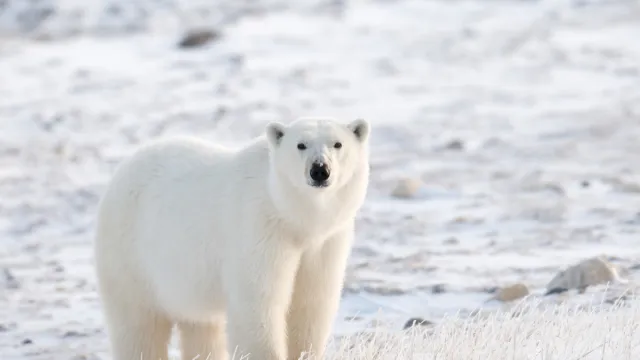
Whether you are a polar bear expert or your knowledge of the Arctic-dwelling animals begins and ends with their use in Coca-Cola commercials, there are so many fascinating things to learn about polar bears, making them one of nature’s most interesting animals. Did you know they are technically considered to be marine mammals? Or how about the fact that they’re not actually white? And that’s just the tip of the iceberg when it comes to these cold-climate creatures. Keep reading for more amazing polar bear facts that you won’t believe.
1
They ask to share food by touching noses.
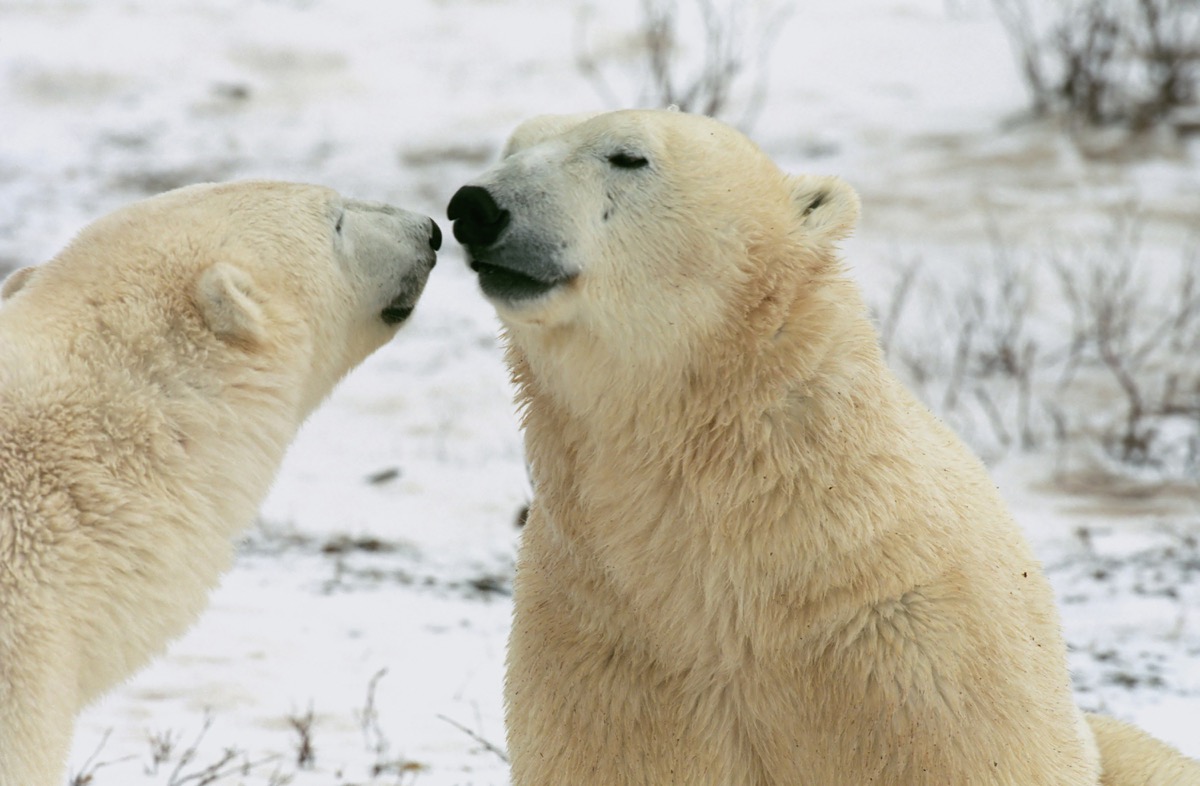
If you wanted some of your friend’s food, you would probably just ask them if they wouldn’t mind sharing. Polar bears, on the other hand, ask for a bite to eat with their noses. According to Polar Bears International, a “guest bear will approach slowly, circle around a carcass, then meekly touch the feeding bear’s nose” to ask if they can have some of the food.
2
Polar bear twins are very common.

When female polar bears give birth, they typically do so in December and usually can give birth to anywhere between one and four cubs at a time. But according to Polar Bears International, they typically give birth in pairs of two, which means twin polar bears are not uncommon.
3
They aren’t actually white.
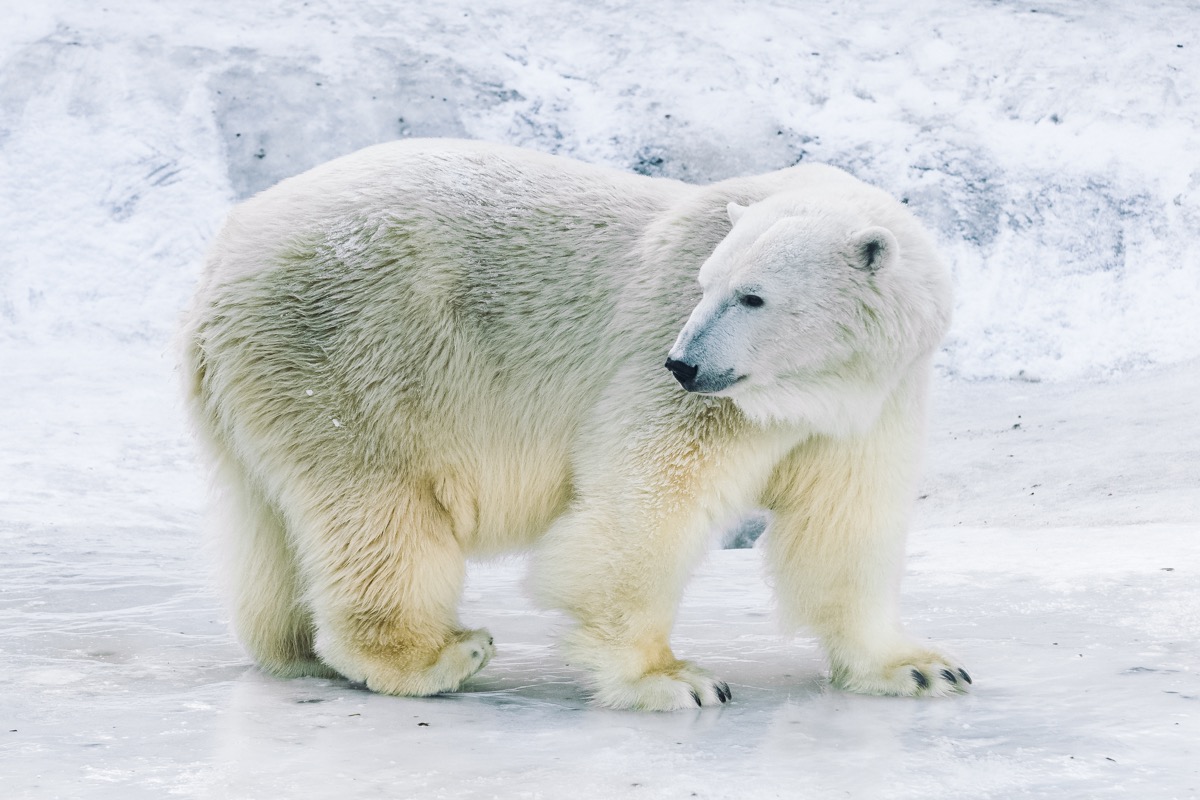
Don’t worry, they look white to us, too. But, the skin of a polar bear is actually black, and their fur is actually translucent. So, we only see white because when sunlight hits their fur, the air spaces between each hair scatter the light of all other colors.
4
They have an amazing sense of smell.
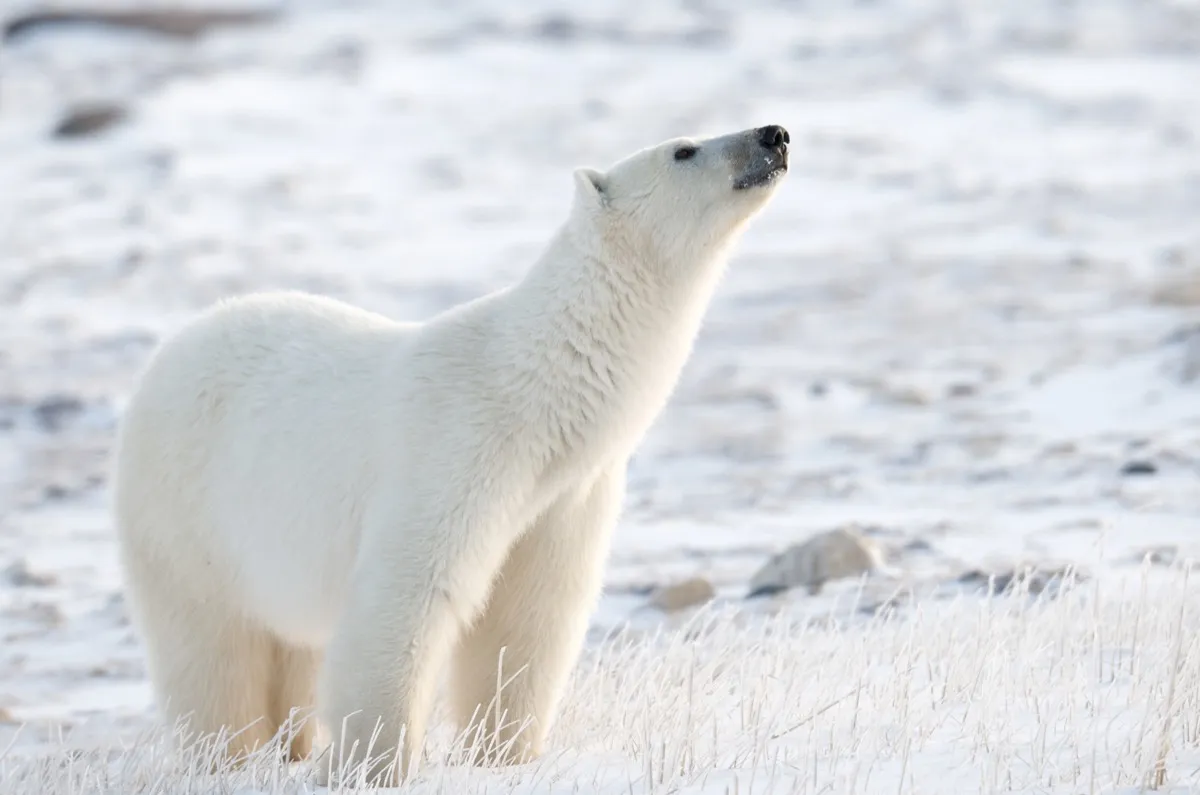
Polar bears heavily rely on their great sense of smell to hunt their prey, according to a 2017 study published in Scientific Reports. It’s estimated that they can smell a seal on the ice from up to 20 miles away.
5
They are the only bears considered to be marine mammals.
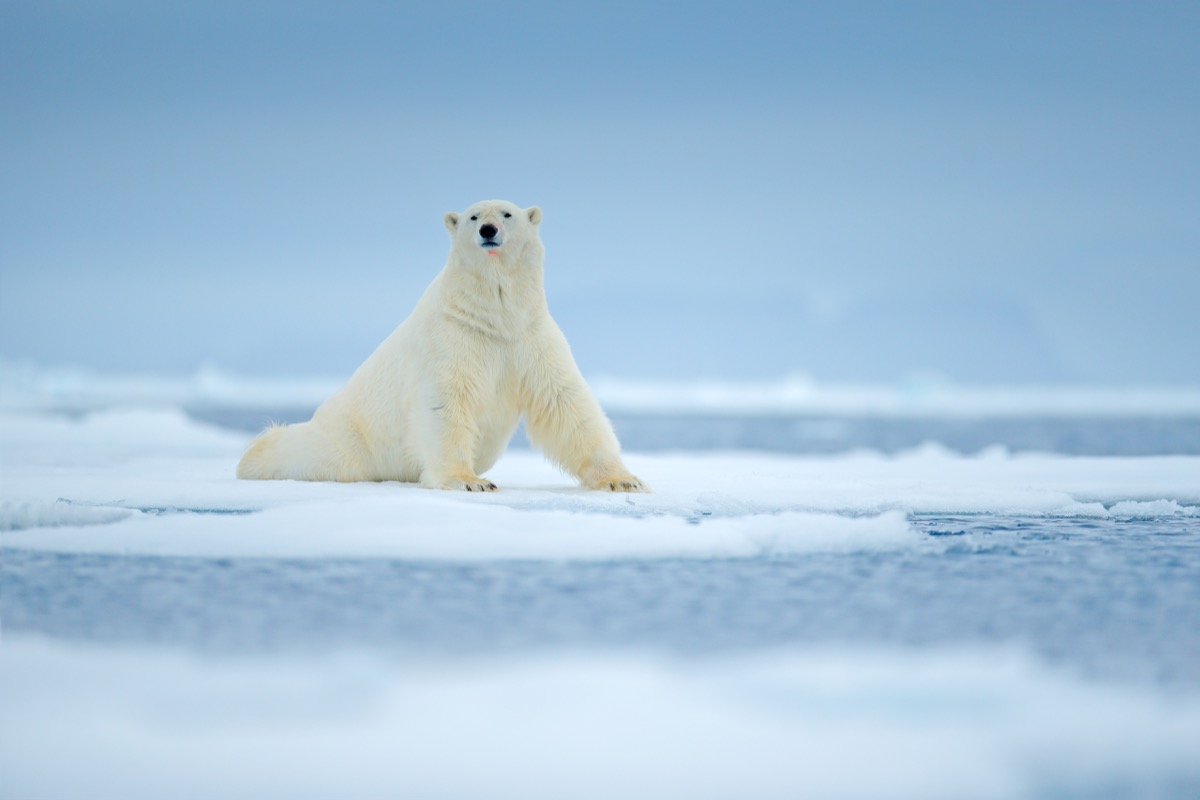
Polar bears are the only type of bears classified as marine mammals because much of their life depends on the ocean, especially when it comes to food and habitat. Their scientific name is Ursus maritimus, which literally means “sea bear.” Other animals classified as marine mammals include whales, seals, dolphins, sea lions, walruses, and sea otters.
6
And they can swim for days at a time.

It’s true—polar bears are super swimmers. While most humans can barely last an hour in the water, polar bears can swim for days at a time. The Environmental News Network reports that polar bears regularly swim distances of 30 miles at a time. What’s the longest polar bear swim of all time? According to National Geographic, one female polar bear swam for a “record-breaking nine days straight,” traveling a distance of 426 miles.
7
They are the largest bears on the planet.
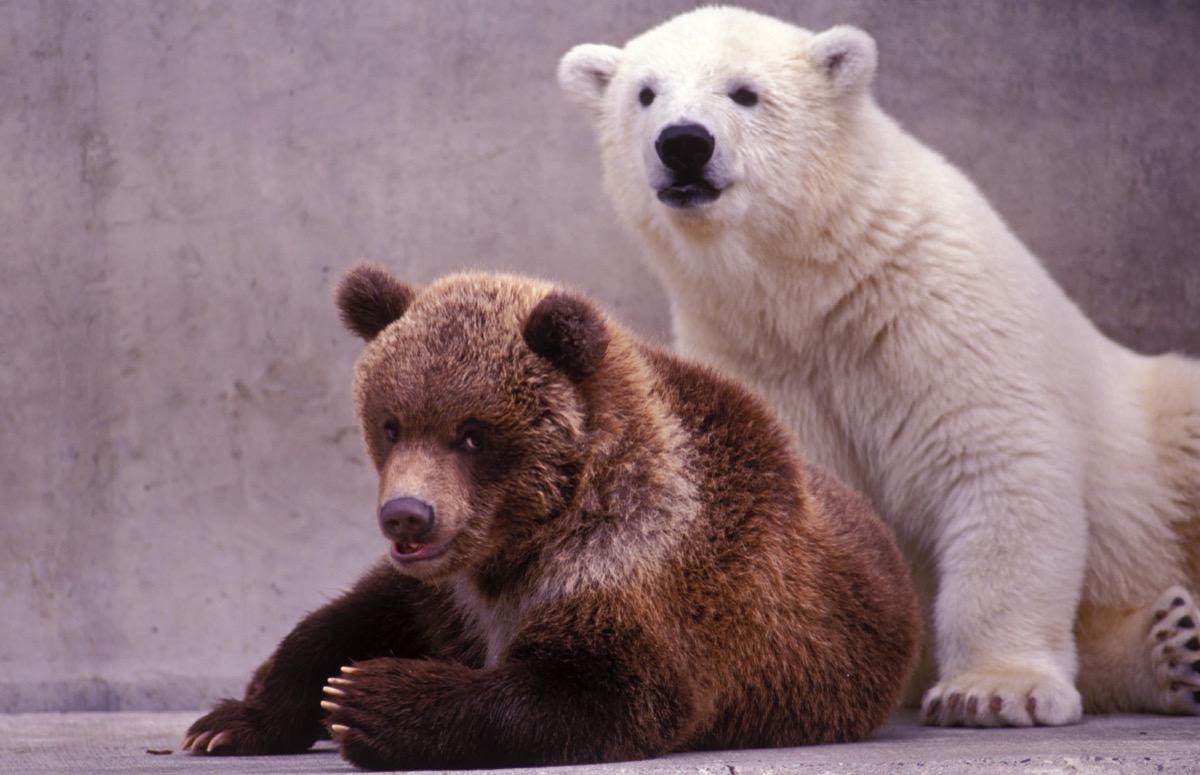
According to National Geographic, polar bears, on average, can grow up to eight feet tall and weight as big as 1,600 pounds. The only bear that could possibly rival the polar bear in size is the brown bear, otherwise known as the Kodiak bear.
8
The largest polar bear ever recorded weighed more than a ton.
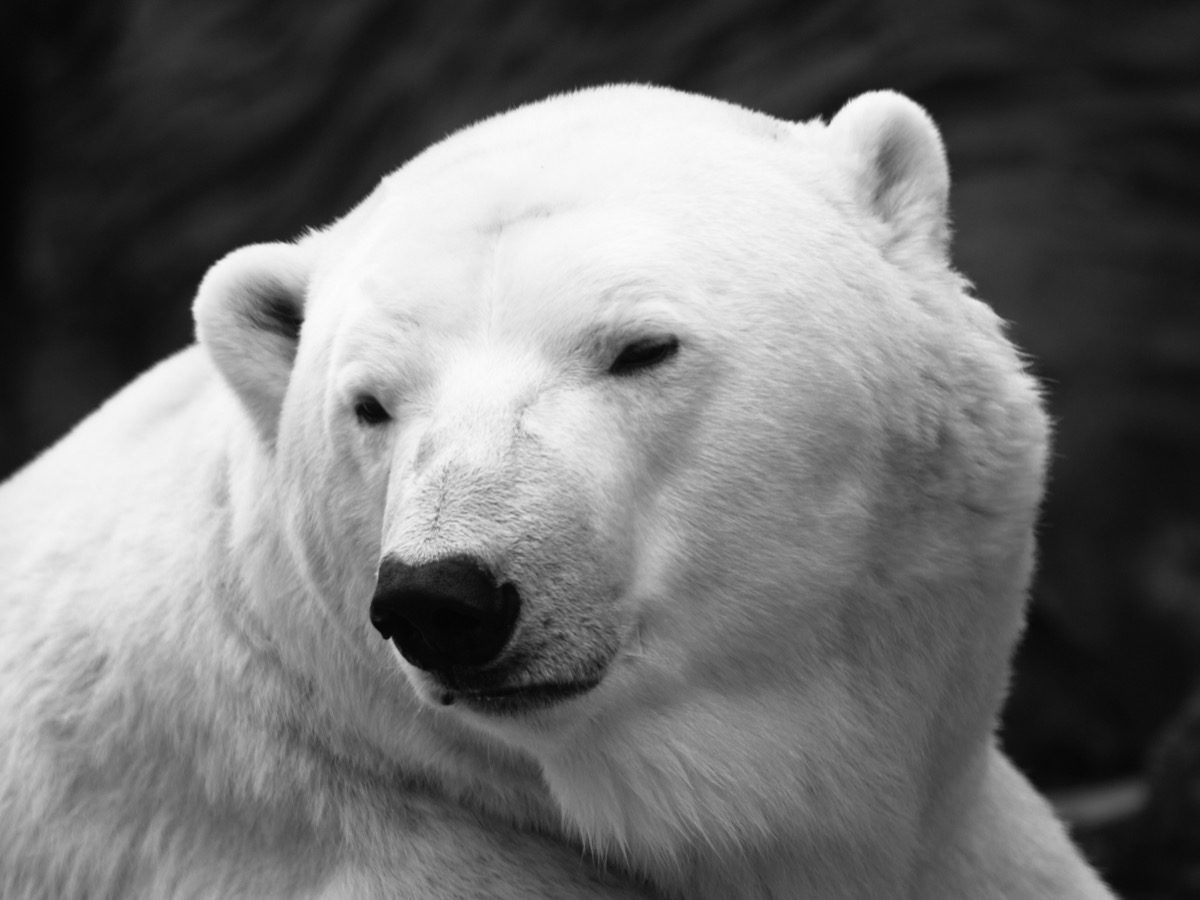
Polar bears typically weigh between 900 and 1,500 pounds, according to the Library of Congress. But the largest polar bear ever recorded weighed in at 2,210 pounds—which is more than a metric ton.
9
They don’t hibernate like other bears.
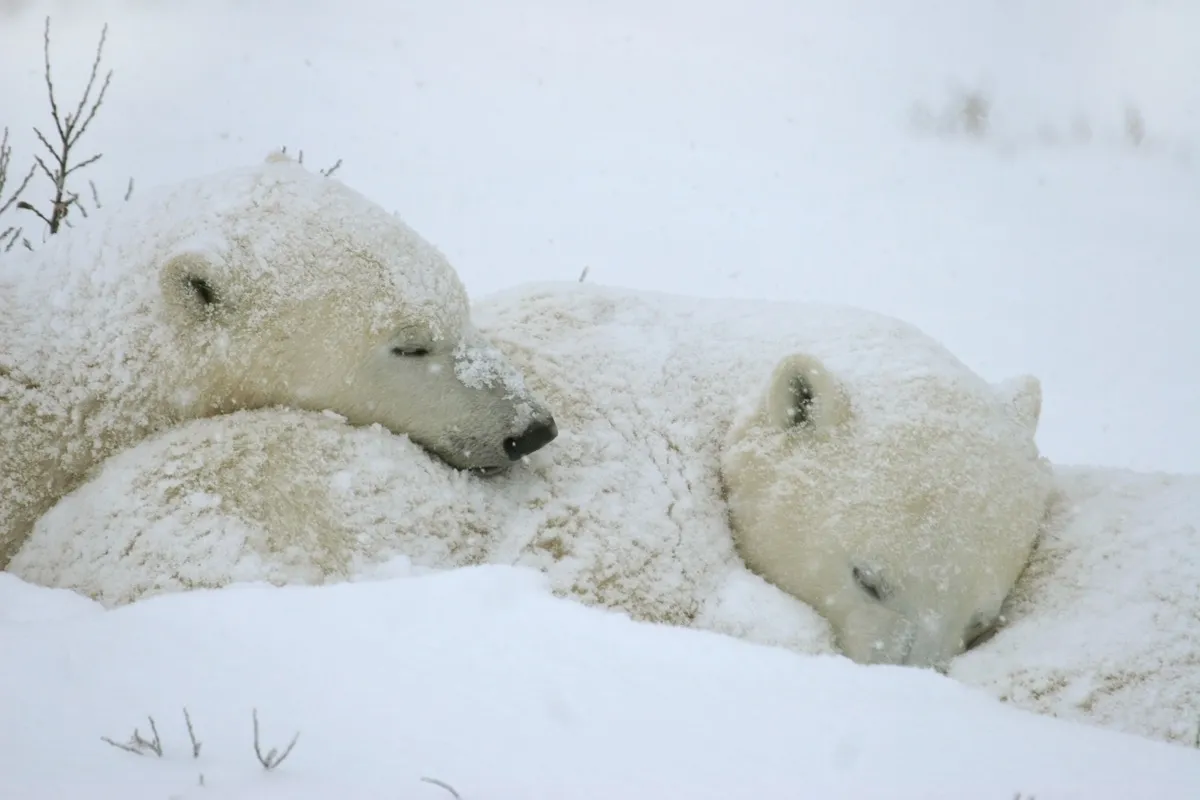
When you think about bears, you often think about the hibernation they go into during the winter. But according to Polar Bears International, unlike other bears, polar bears don’t really have a need to hibernate. Only pregnant polar bears stay in a den for months at a time to protect, give birth, and nurse their cubs. But other polar bears just stay outside during the winter, hunting and doing normal things.
10
They can go months without eating.
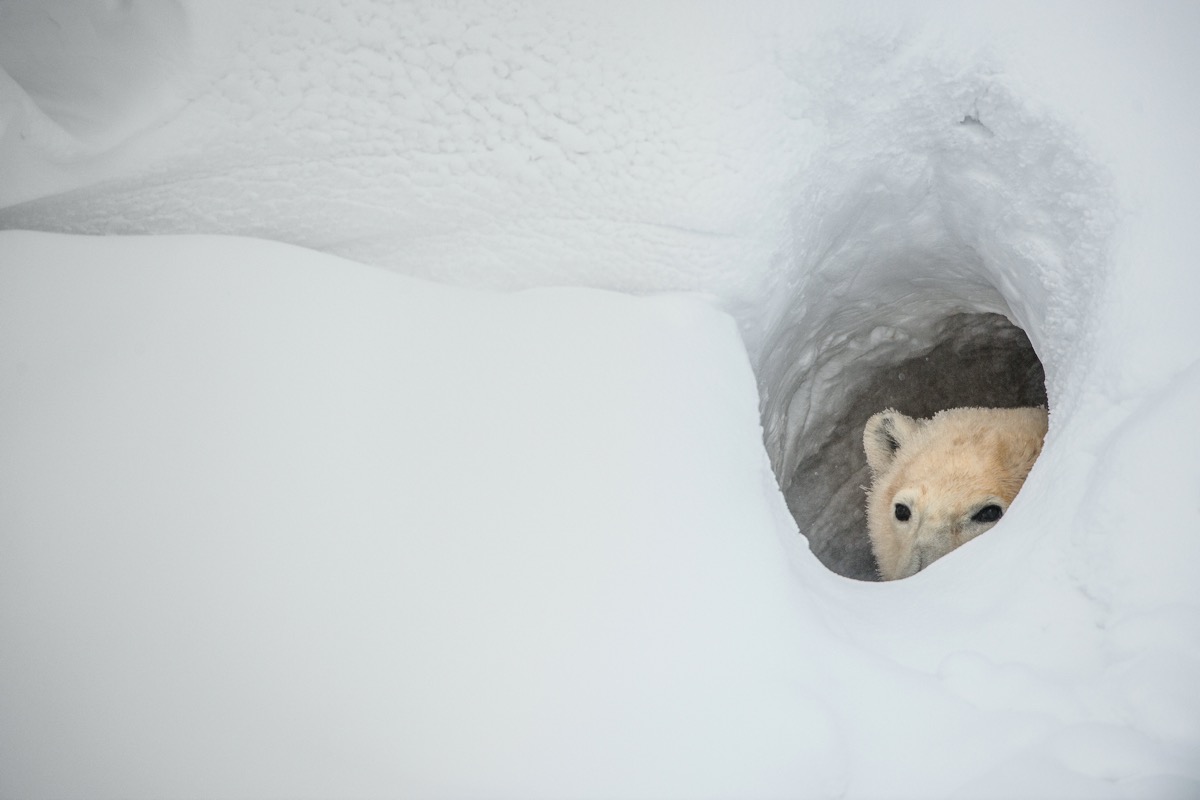
Sometimes polar bears have to travel long distances to get their food, which explains why they’ve adapted to going months without eating. According to Lisa Kemmerer’s book, Bear Necessities, polar bears have the ability to store nearly 150 pounds of food in their stomachs and can enter a “metabolic state similar to that of hibernation” at any point of the year. In fact, pregnant polar bears can actually go without food or water for four to eight months, as they retreat to their den to protect their soon-to-be-born.
11
Their paws are basically built-in show shoes.
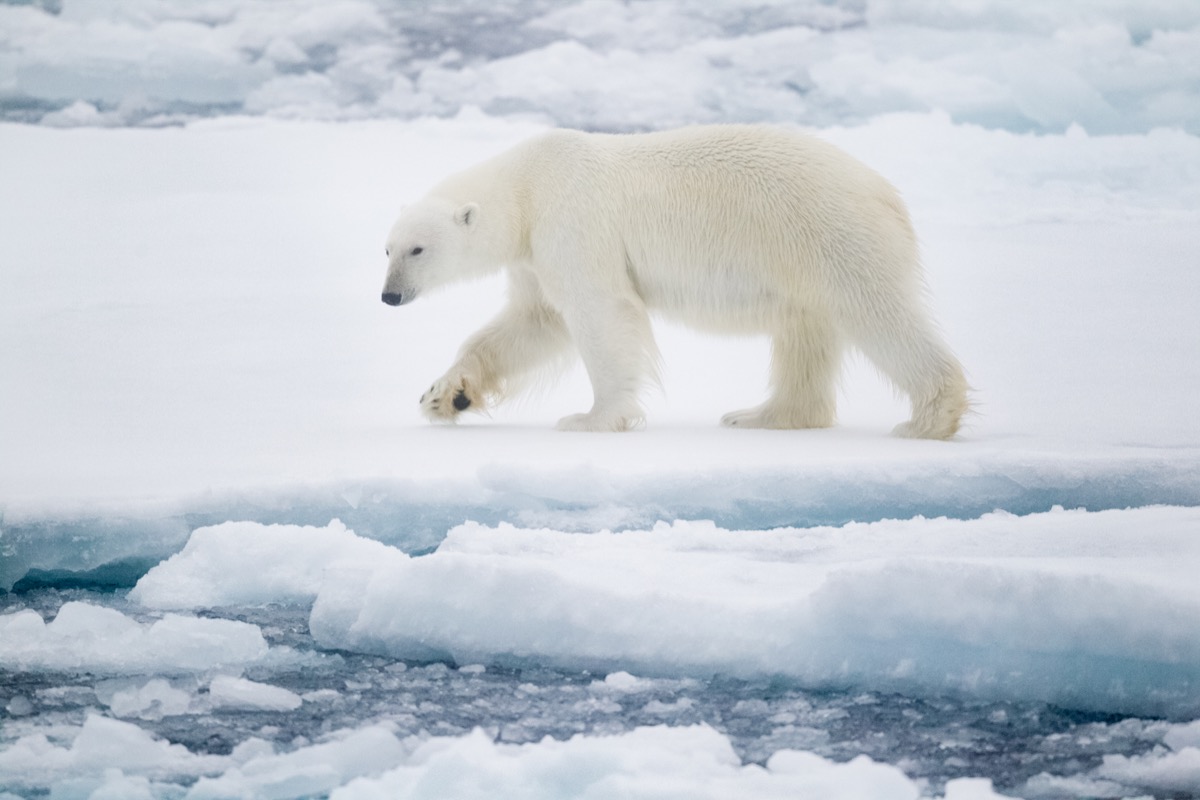
If it seems like polar bears never look as clumsy or uncomfortable walking on the snow as humans or other less-equipped animals often do, it’s because they have a built-in advantage. Polar bears’ paws are ideal for roaming the Arctic, according to Polar Bears International. They have black footpads on the bottom of each paw which are covered in small, soft bumps—known as papillae—which grip the ice, and keep the bear from slipping. They also have bits of fur in between their toes to add extra security.
12
They roll in the snow to clean themselves.
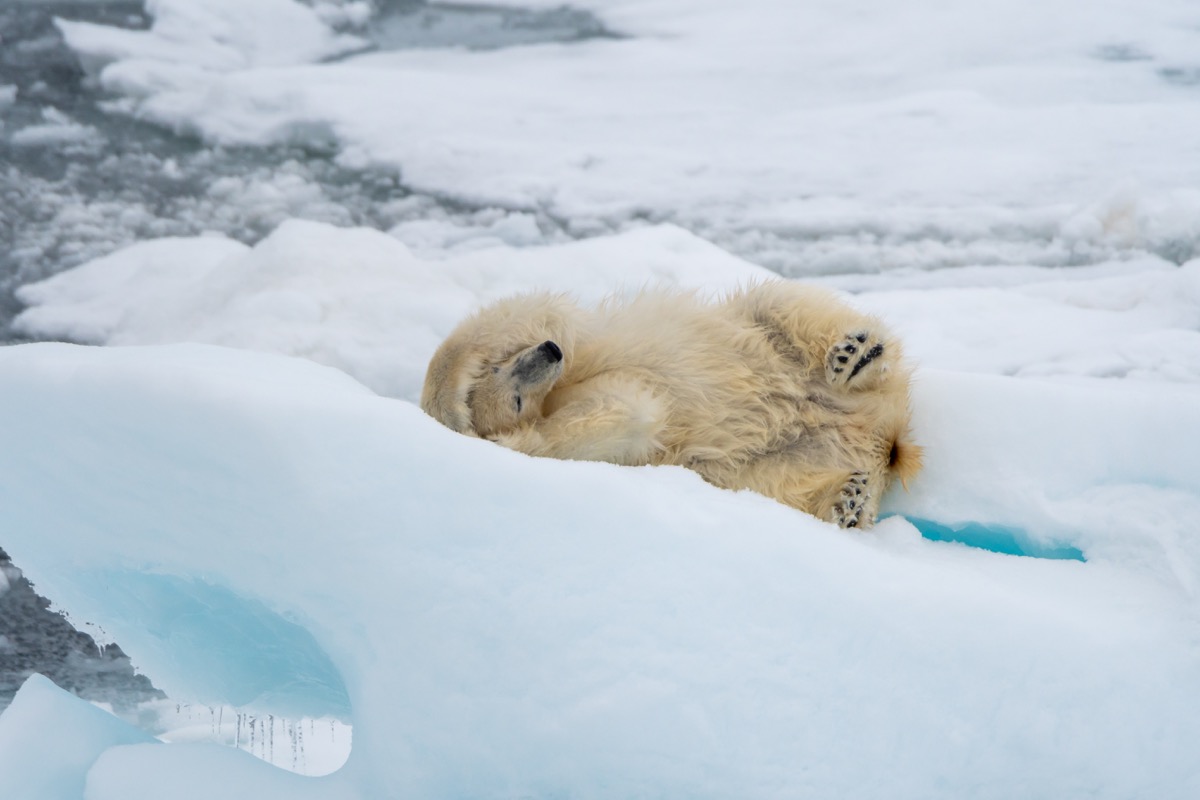
How does a polar bear get clean? They just roll around in the snow! According to the Utah Hogle Zoo, polar bears take cleanliness very seriously because anywhere that dirt ends up is a place that “cold air or water can reach their skin.” While they may go for a swim as a way to bathe in the summer, in the winter, when things are frozen, they clean their fur by rolling around in the snow.
13
They can overheat.

While it seems hard to believe, given the nature of the climate they live in, polar bears can in fact overheat. Since they have two thick layers of fur and a thick layer of body fat, they have more of a chance of overheating—especially when they run—than they do of freezing, according to Polar Bears International.
14
They have no natural enemies.
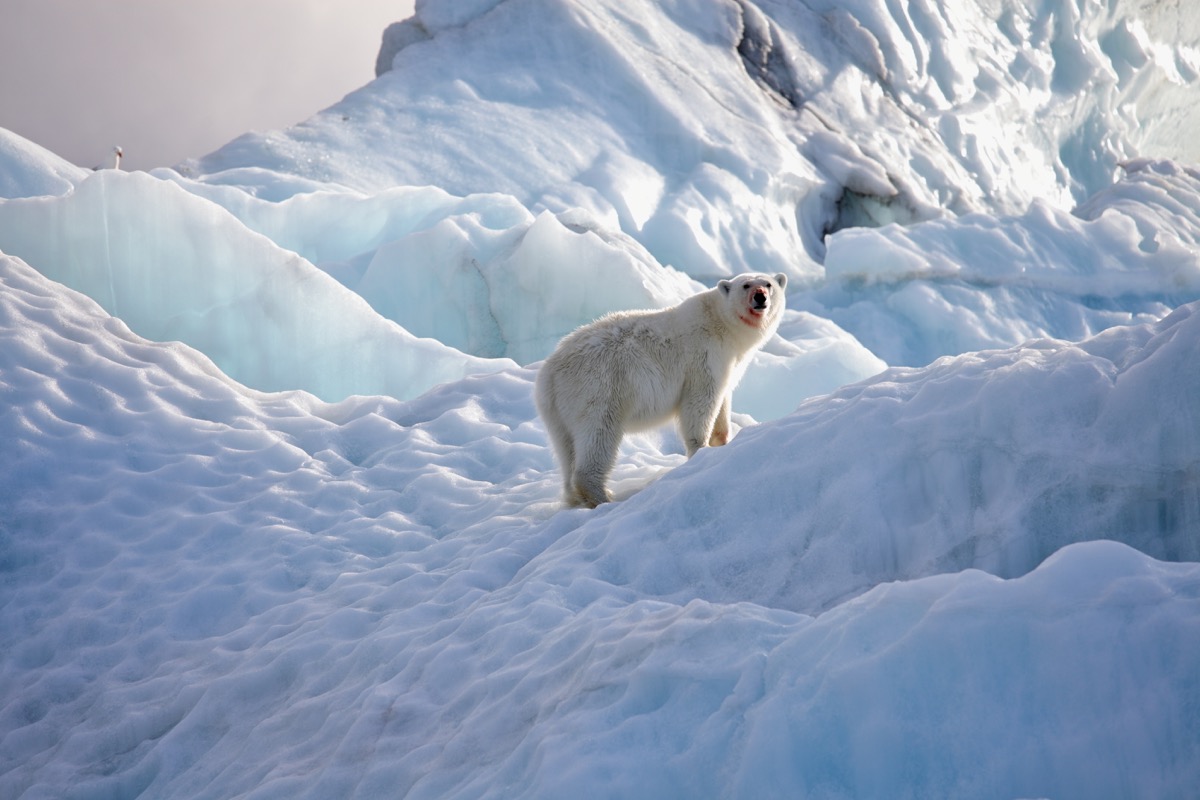
Polar bears are known as the “apex predators” of the Arctic, which means they are the top predator and have no natural animal predators that seek them as prey. So what is the biggest threat to a polar bear? Climate change. According to Discover Wildlife, polar bears need sea ice to “hunt seals,” and the reduction of sea ice through climate change is leading to “fewer cub births and reduced survival rates.”
15
They have mated with grizzly bears.
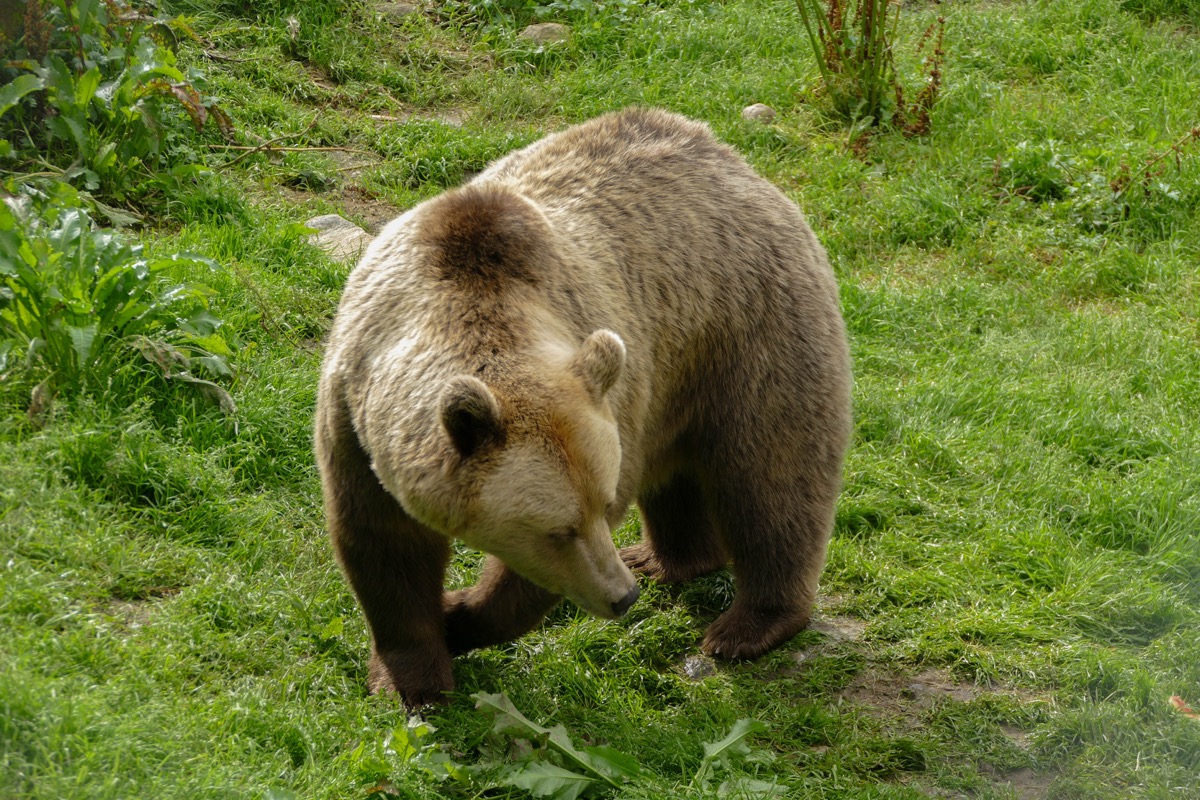
It may seem like polar bears have only one possible mate: Other polar bears. But, it turns out, they’ve actually also adapted to mate with grizzly bears. In 2006, National Geographic reported that they found a grizzly-polar bear hybrid. The bear had white fur with various brown patches, long claws, a concave facial profile, and a humped back. Unofficial names include “grolar bear” and “pizzly bears.”
Additional reporting by Ashley Moor.